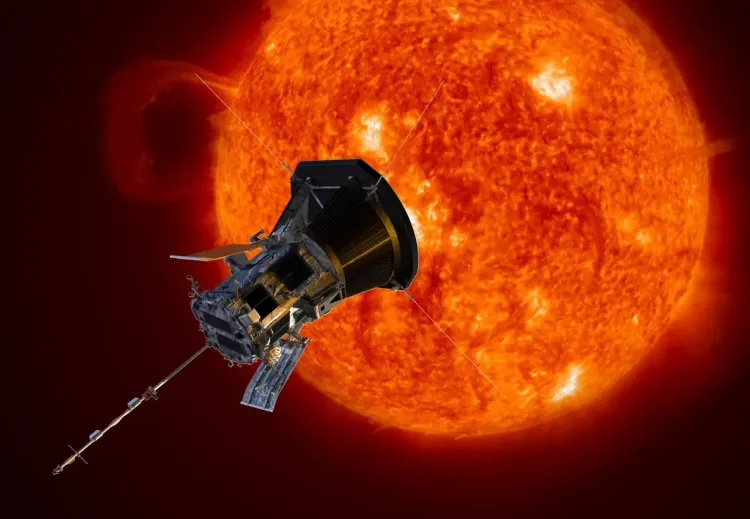NASA's Parker Solar Probe to Pass Within 6.1 Million Kilometers of the Sun on Christmas Eve

New Delhi, Dec 23 (NationPress) NASA's Parker Solar Probe is on track to make its historic flyby of the Sun, reaching a distance of just 6.1 million kilometers on Christmas Eve.
Since its launch in 2018, the Parker Solar Probe has been dedicated to uncovering the secrets of the Sun. This will mark the first of its last three and closest encounters with the Sun's surface.
According to NASA, the Parker Solar Probe spacecraft is functioning well and operating as expected. This announcement came after mission operators at the Johns Hopkins Applied Physics Laboratory (APL) in Maryland received a beacon signal from the Parker, via NASA's Deep Space Network located in Canberra, Australia.
“Parker is currently set to fly within 3.8 million miles (approximately 6.1 million kilometers) from the Sun's surface on Tuesday, December 24, at 6:53 a.m. EST (5:23 p.m. IST),” stated mission officials.
“No human-made object has come this close to a star before,” remarked Nick Pinkine, the Parker Solar Probe mission operations manager at APL.
“Parker will be sending back data from unexplored regions,” Pinkine continued.
During its closest approach, known as perihelion, the spacecraft will not be in communication with mission control. Parker is expected to send another beacon message on December 27 to verify its condition after the close flyby.
To date, Parker has successfully completed 21 close encounters with the Sun, with the most recent one occurring on September 30.
The spacecraft has also performed seven flybys of Venus to utilize its gravity for a trajectory adjustment, aiming for a series of record-breaking flights around the Sun.
On November 6, Parker executed its final Venus gravity-assist maneuver, passing within 387 kilometers of the planet's surface.
This flyby has fine-tuned Parker's path into the ultimate orbital setup for its main mission.









